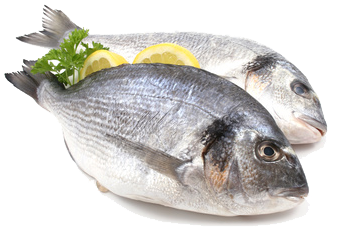The seafood industry generates large quantities of waste during its production processes, specifically brine which is especially difficult to treat. First, we will examine the most common types of waste:
1. Liquid Waste
Liquid waste is primarily composed of organic material with a high content of proteins, salts, fats and other suspended solids. Liquid flows are generally high due to the large quantities of water required in production processes.
Liquid waste is mainly: bloody water, wash waters from cutting stages, gutting and filleting, pulp pressing (in frozen fish), packaging and cooking, other liquid waste coming from cooking processes, cooling waters and waters from the cleaning operations of the plant itself.
2. Solid Waste
Solid waste generation is also of importance. Some companies prepare and deliver it for animal feed, others return it to the ocean, and some send it to reduction plants.
Solid waste produced is derived primarily from the cutting and gutting stages, consisting of heads, tails and intestines. Manufacturers of fishmeal reuse this waste as raw materials; therefore its disposal in landfills is minimal.
In canned seafood, intestines and shells are produced which can also be taken advantage of.
RECYCLING: REUSE AND RECOVERY
Before moving on to the technologies better suited for waste treatment, we would like to emphasize that some waste can be utilized for other purposes without the need for treatment.
1. Water Reuse
• Reuse of wash water in washing sequences. For example, less polluted or dirty wastewater from the plant can be reused for cleaning operations at the beginning of the process.
• Waters from the cooling operation of the autoclave in the canning process can be employed in equipment and plant cleaning.
2. Recovery of Waste as By-Products
• Utilization of fish and seafood waste in preparation of preserves and/or animal feed.
• Utilization of fish and seafood waste in preparation of fishmeal that is used for animal feed.
• Recovery of solids and fats from effluents through centrifugation, separation or concentration with subsequent dehydration for use in animal feed formulas, depending on the volume of effluents.
• Use of shells from shellfish in new product development, for example calcium meal
TREATMENT AND WASTE RECOVERY
An innovative treatment process consists of extracting and concentrating proteins and fats rich in Omega 3 from commercialization. This is achieved by the combined action of ultrafiltration membranes and vacuum evaporation equipment. Lastly, by means of spray drying, protein meal and oleic fatty acids are obtained, both of which have a high market value.
The remaining water often contains high amounts of salt. It can be treated with evaporation-crystallization equipment enabling us to obtain a clean effluent that meets regulations and can be reused or not, according to the manufacturer. Lime obtained after this process can be utilized in highway deicing and industrial activities.
Thanks to these technologies we are able to recovery waste, transforming it into products of high commercial value in addition to obtaining zero liquid discharge.

